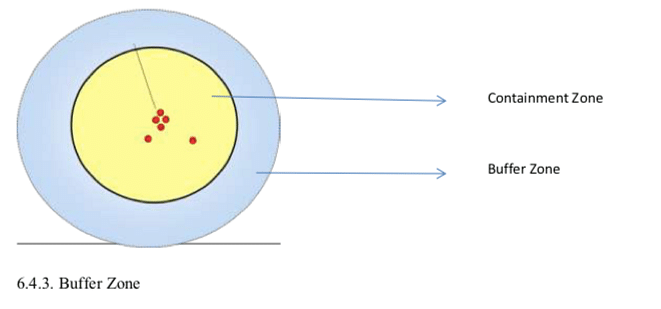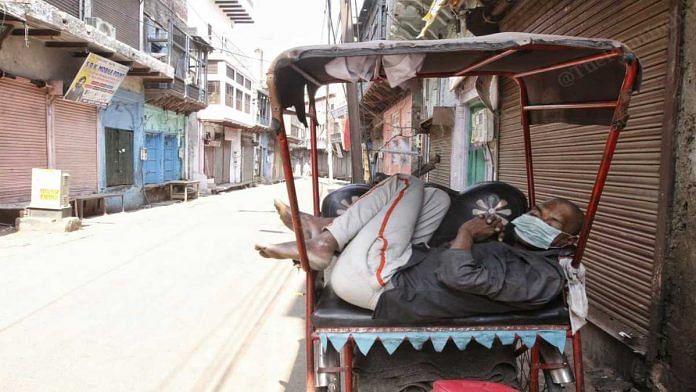New Delhi: The Yogi Adityanath administration Wednesday sealed “Covid-19 hotspots” in 15 districts of Uttar Pradesh, including Noida and Ghaziabad in the National Capital Region (NCR), to check the spread of the pandemic.
The containment strategy, which kicks in midnight, is similar to the one employed by China in Wuhan, where the pandemic originated, and is also being implemented in other parts of the country like Maharashtra and Rajasthan.
It would entail a complete shutdown in the hotspots — an area with multiple Covid-19 cases — with no exception even for the essential services exempt from the 21-day lockdown imposed by the central government.
The idea is to isolate these hotspots to ensure no one visits or steps out, in order to ease detection and isolation of other positive cases to break the chain of transmission.
ThePrint explains.
Also Read: Doctors, IAS officers & a scientist — the 5 women leading India’s fight against Covid-19
What does a containment zone mean?
The Uttar Pradesh government’s order came as the number of coronavirus cases in India went past 5,000. The number for Uttar Pradesh stands at 343, including 26 who have recovered.
Amid government estimates that the number of cases is doubling every 4.1 days, the union health ministry released a containment strategy for large outbreaks Saturday.
According to the guidelines laid down by the ministry, a containment zone is an area where the lockdown is implemented more strictly with its borders sealed too.
The process begins with the hotspots being completely cordoned off. All vehicular movement is barred in the areas other than to maintain essential services. Residents are not allowed to step out of their houses even to buy groceries and other essentials, all of which needs to be home delivered.
The strategy includes mapping a 3-km radius around the home of a Covid-19 positive case as a containment zone, and a further two kilometres as a buffer zone.

Then, all the people a patient came in contact with are identified and quarantined.
Frontline health workers — including accredited social health activists (ASHAs) and anganwadi workers — also conduct door-to-door screening to find suspected cases, such as those with flu- or influenza-like symptoms.
The ones with symptoms are screened, and, if eligible, tested for Covid-19.
When will it be scaled down?
The containment plan outlined by the ministry states that the measures will be scaled down when a four-week window yields no new confirmed Covid-19 cases. If the cases do not stop rising, it states, a decision can be made to move from containment to mitigation.
India is already under a three-week lockdown, which is currently scheduled to end 14 April. Prime Minister Narendra Modi has said that a final decision on the duration of the lockdown will be taken in consultation with chief ministers.
Also Read: Covid-19 hits Modi govt budget, Q1 expenses capped to save funds to fight the virus



